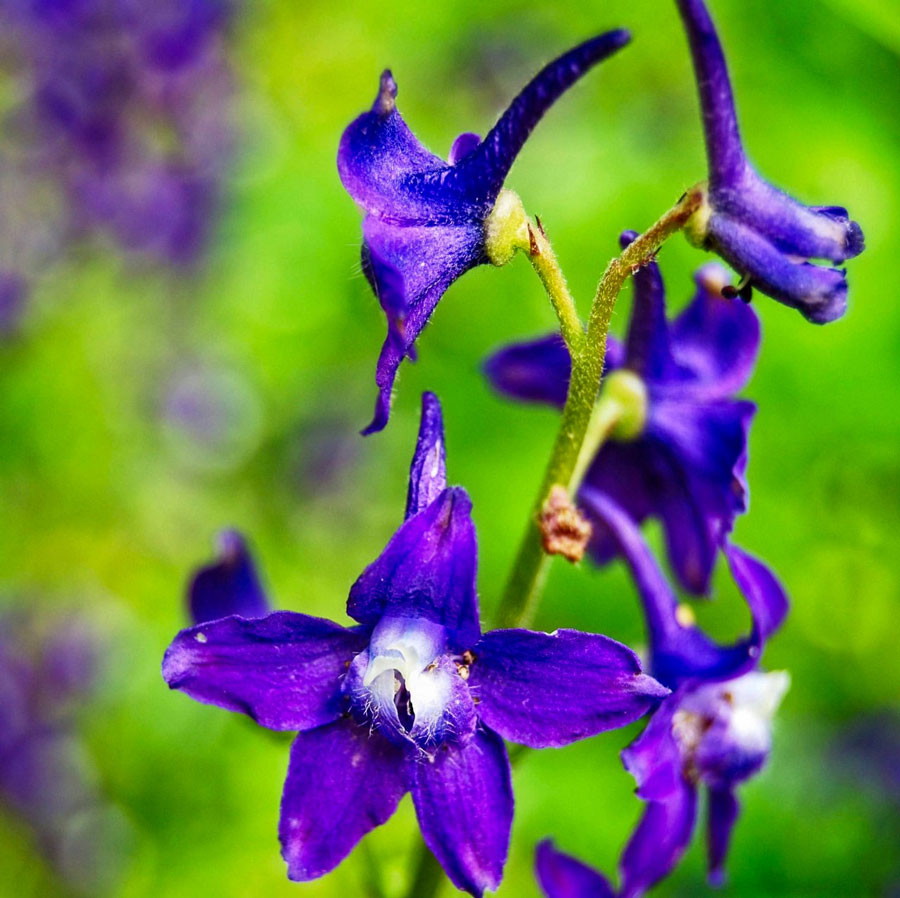Larkspur… aptly named

Larkspur, the flower.
Anyone who hikes the area gets it. In mid-spring, the Larkspur proliferates in Douglas County foothills. But what about the town so named? Let’s dig up some little-known facts brought out in a magnificent local tour conducted by Larry Schlupp in September.
Before 1861, today’s Larkspur was in Kansas Territory. Being on East Plum Creek, a branch of Trappers Trail and part of the First Territorial Road, the stagecoach line grew the town’s importance. When General William Palmer’s railroad got to Larkspur in 1871, efficient and reliable trains ended the stagecoach era. Sixteen years later came the Atchison Topeka and Santa Fe that crossed Perry Park Road. It looked like the town was ready for prime time and local businesses popped up all over.
By 1887, town merchants were selling their wares or services along the north-south roads that straddled the Denver and Rio Grande Railroad track, east of East Plum Creek. Among them was Frank Butts, a wagon maker, the Harvey brother’s Redstone Quarry, two grocery stores, Morey Bothers and Ross and Fitch. The big event came in 1896 when Richard Fosdick founded the Larkspur Creamery on the south side of Plum Avenue, which would serve many milk drops in the county for almost 70 years.
On the face of early development, it appeared Larkspur had the necessary combination of location, entrepreneurialism and momentum to become a sizable place. Fate intervened in a myriad of ways.
The Long Expedition of 1820 noted that its high altitude and rolling hills were an anathema to any serious agriculture and subsequent population density. As the automobile rose in importance in the early 19th century, railroad traffic whistled through the town carrying only freight to larger hubs. Transportation patterns changed and the eventual routing of I-25 east of East Plum Creek obscured the town, consigning it almost to oblivion. The coffin nail came in 1965 when many of the town’s principal buildings were wiped out in the South Platte flood.
The census of 2020 shows 206 folks within city limits. Not ideal, I suppose, if you are looking to brag about vitality. But there is a backstory…
Larkspurians like it that way, at least that is how I read it. It remains somewhat of a “Sound of Music” place. The (unincorporated) hills are alive with people who love their space and nature – the untrammeled beauty of a place at peace with itself. In that sense, Larkspur the town, is indeed a wildflower.
By Joe Gschwendtner; photo courtesy of the Creasey-Mahon Nature Preserve